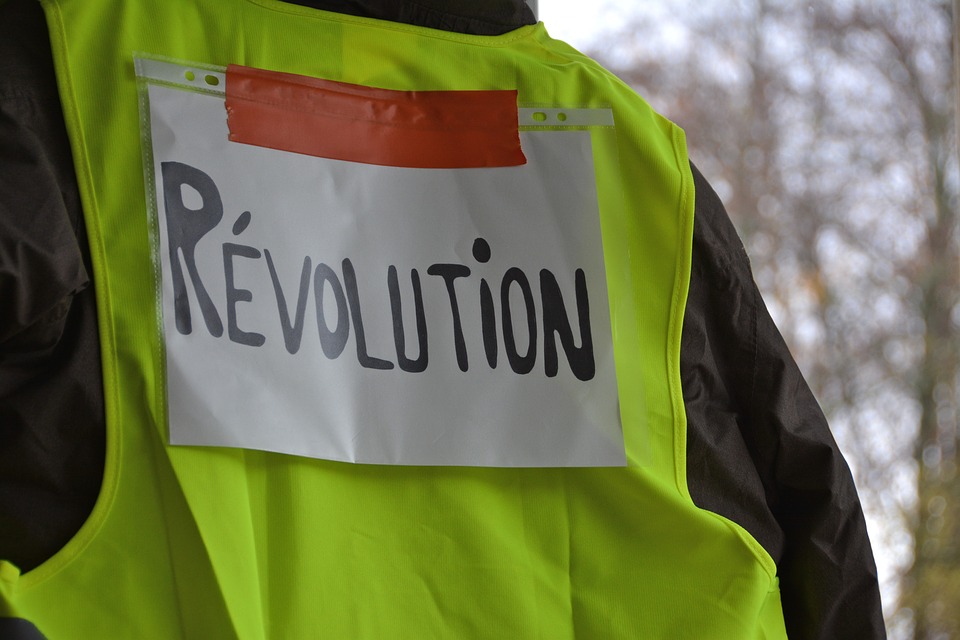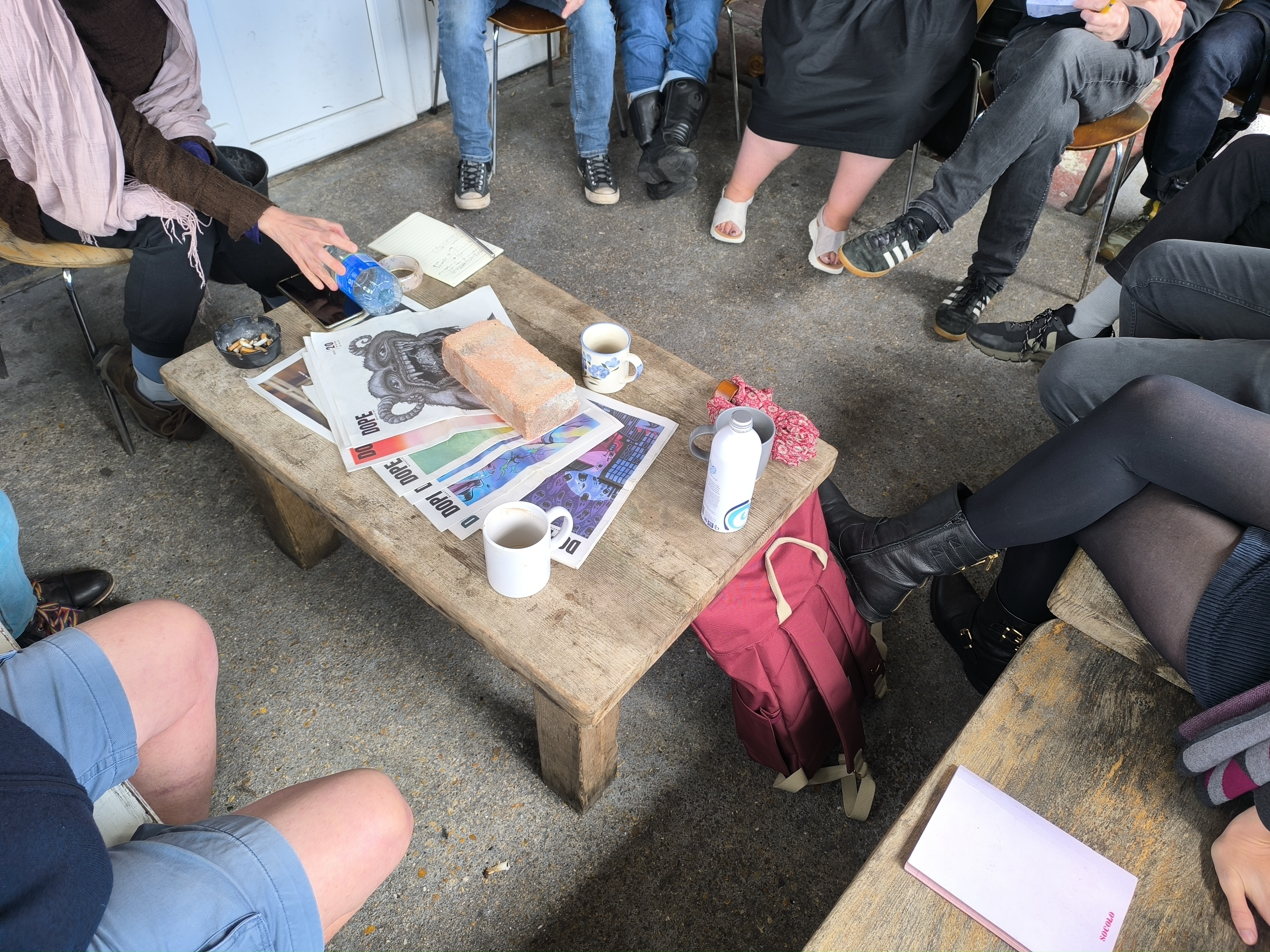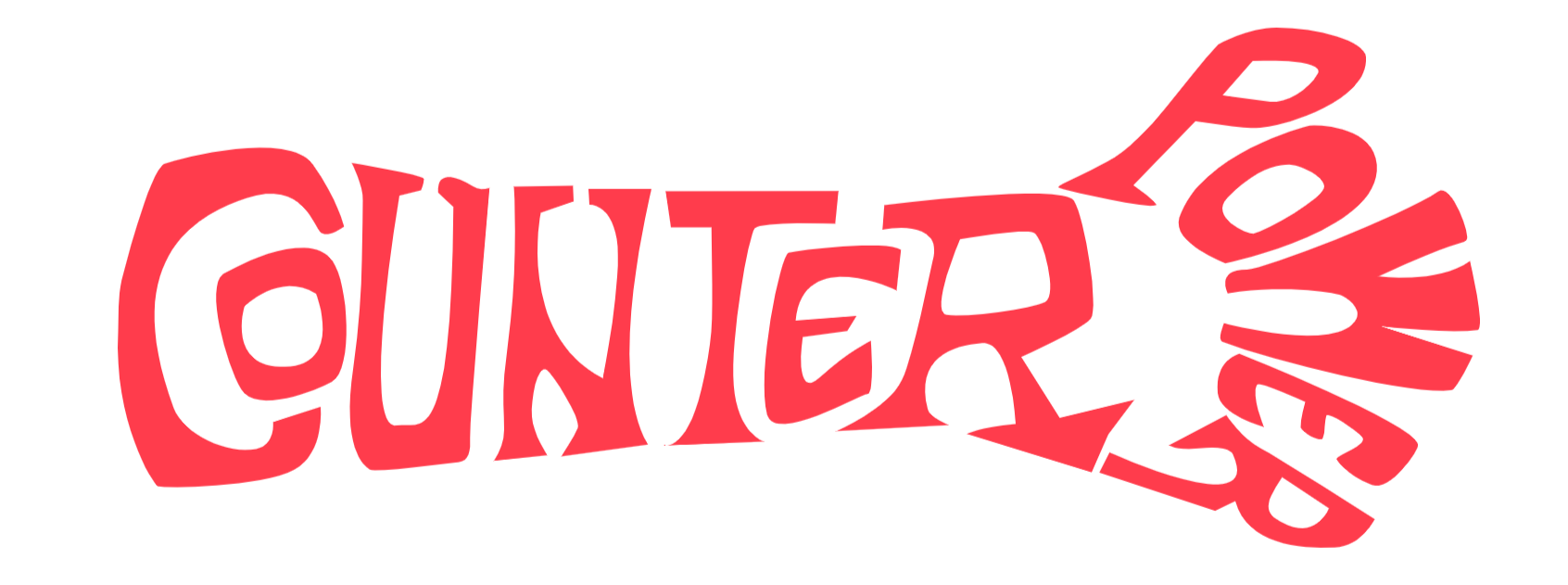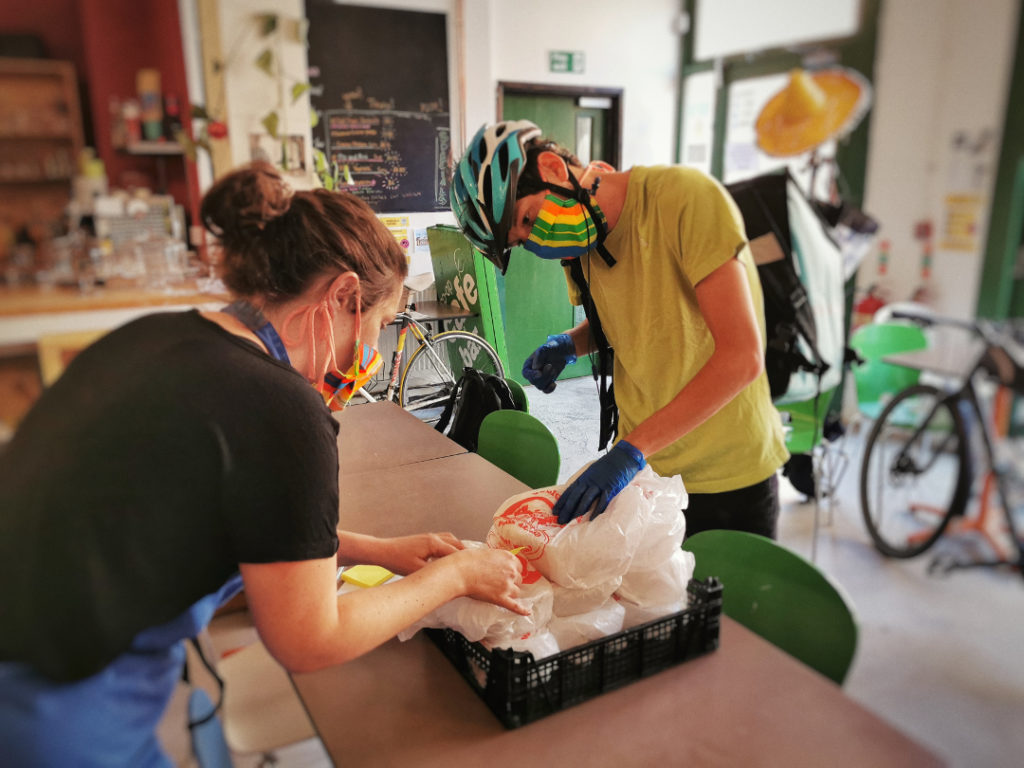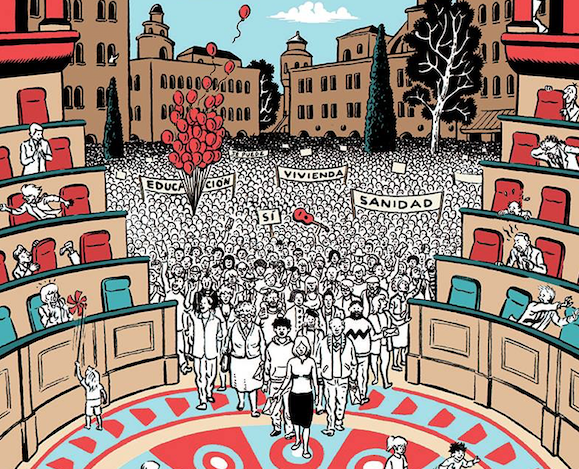We have probably all seen the news from France, many of us feeling a surge of joy as the people appear to take the streets, others confused as to the nature of the movement when we find out it was triggered by a rising fuel tax that was motivated by a need to address issues of climate change. In addition, there has been talk of far right involvement in the ‘Gilets Jaunes’ movement. Given the fast moving and informal nature of the movement, it might be difficult to find our bearings. We have gathered some resources here, voices from the left in France, with a view to helping comrades get a handle on the situation. We think it’s important that we amplify the voices of the revolutionary forces in the midst of what is an astonishing display of the capacity of the people to change the complacent face of power.
————————————————————–
From a comrade in the ‘Beyond Europe’ network:
It is quite important that the non-French speaking comrades understand a bit about what’s going on in France during these last weeks. Here is an attempt to explain from our perspective what is happening in the Gilets Jaunes (GJ) movement. This “presentation” is still no doubt incomplete, as it is a complex situation, different in many places, and it is just impossible to know everything that is happening.
Feel free to broadcast this text to people you know.
THE BEGINNING OF THE MOVEMENT: FACEBOOK AND ECONOMIC BLOCKADES
This movement started to rise against a new tax on fuel that was supposed to be enforced on 1 January. It took the Gilet Jaune (yellow safety jacket) as its symbol. Besides the meetings and organisation that took place on the blockades, the movement is organised mostly on Facebook. The first day of action was on 17 November. There were about 2,000 blockades all over France, many of them on the toll-booths of the motorways, some at the entrances of commercial centres, and some at refineries and ports. Many of the people who are taking part in this movement are blocking and demonstrating for the first time in their life and this movement might be a lot of things but it’s definitely not the “usual” French social movement.
During the week a lot of GJs are working, so there are less blockades, but some places are permanently occupied and sometimes partially blocked for over three weeks; mainly roundabouts – some people have even built huts and say they will spend Christmas and New Year’s Eve there – but also some ports.
On 24 November, there was the first demo of the movement, organised in Paris only. Thousands of people came from all over France, and the Champ Elysees, the most famous and rich boulevard of the country which leads to the governmental palace, was heavily barricaded and people were rioting for nearly ten hours. It was the same situation in all the streets around.
Despite the fact that there were millions and millions of Euros in damage after the 1 December riots in Paris and everywhere in France (we’ll speak more about this later), the main economic impact of the movement is due to all the blockades and the shops which closed last Saturday because of the riots. Considering that most of the shops are making between 15% and 25% of their yearly profits in the four Saturdays before Christmas, the cost of the movement is already counted in billions. And it is far from over.

ABOUT THE 1 DECEMBER DEMONSTRATIONS ALL OVER FRANCE AND POPULAR SUPPORT
On 1 December, demonstrations were organised not only in Paris but in dozens of cities. Actually, we cannot really call them “demonstrations”, as there are no authorisations, no official routes, no official organisers. They rather emerged from some callouts on Facebook to take to the streets or to march to some state institutions (mostly the “préfectures” or the city halls).
Some 65,000 cops were mobilised for this situation, which is nearly all the cops the French state can mobilise. Despite this, the situation was totally out of control for the whole day in many places: Paris, Toulouse, Marseille, Dijon, Bordeaux, Le Pouzin, Tours, Le Puy En Velay – all have seen the biggest riots since 1968 at least, many wildcat demonstrations, hard fights with the cops, burning barricades, sometimes looting. In many other cities, there were also clashes on a smaller scale. Some “préfets” (the regional police chiefs who are legally not allowed to make that kind of statement) have contacted journalists and declared that the situation is some kind of uprising, or even “a pre-revolutionary moment”, and that the government doesn’t understand the situation at all.
We can point to two extremely surprising aspects of this movement:
According to the polls (we know, we usually don’t give a shit about this crap, but here it has an importance), more than 70% of the French people are supporting the movement. Even the hard clashes of 1 December haven’t changed this rate of support. This has a significant impact on the way the media speak about the movement – it can be really funny to look at the news or to listen to the radio these days – and also on the way the government considers the situation. Macron has had backtrack on his policy for the first time, but apparently this was too little too late.
One of the main problems for the government is that the people who are demonstrating and rioting feel they have a right to do so and are claiming that right. Many of them say they cannot take it anymore, that they cannot tolerate the way they are living, working full time and still being poor. They assert that it is their right to protest, that it is written in the Constitution, and that there is no question about their needing an “authorised demo” or whatever. So when the cops shoot tear gas and rubber bullets at them (like they usually do), the people get really mad, some shout at the cops that they pay for their salary and that the police should be ashamed of doing what they do. If there are some organised leftist or fascist groups in the riots, it seems that most of the rioters are “simple” citizens who have been radicalised over an extremely short time.
ABOUT THE FASCISTS
As we have mentioned above, fascists are present in this movement, at least in some places. In Paris, organised groups, coming mainly from other regions of France, have been present. On 1 December, several groups gathered (we don’t know how many of them, possibly 200 people) and spent the morning around the Arc de Triomphe, taking part in the clashes with the cops and doing their nationalist bullshit (songs, commemorations) around the historical monument (we don’t know where they were in the afternoon). There were fights with anti-fascist groups. In some cities, the fascists don’t seem to be part of the movement and, in a few others, they seem to structure the movement. As for the “leftists”, they are really a minority, but in many places the protestors are clearly against racism and fascism. However, it is crucial not to let the fascists set up or to take an important position in the movement. Once again, any militant anti-fascist help is welcome.
Another issue is the disturbing use of the national flag and anthem which can and should concern us. Quite a number of demonstrators carry small French flags, and the anthem is sometimes sung during the protests. Some GJs certainly see it as a patriotic and nationalist symbol (the fascist “Front National” party is over 20% in the polls) but there is also a connection to the history of revolutions in France, in which the flag and anthem are seen as a call to rise up against “tyranny”. More simply, many people used the flag for the French victory in the football world cup and it is for them the symbol of a massive national celebration. We have seen some guys with the French flag, that we were suspecting to be nationalists, singing chants like “Black, white, red, yellow, we don’t care, we are all together”. We have met some demonstrators carrying huge French flags who had ideas similar to ours. We also see that the 1789 Revolution and the decapitation of the king is quite present in the ideas, the talks, and the slogans (the main slogan you hear is “Macron démissionner” or “Macron resign”). We don’t want to paint a great monochrome picture. There is a nationalist element in the movement – in Lyon, for example, it seems that the 1 December demo (rather small, more or less 300 GJs with no riots) was coordinated by the fascist groups (quite active in the city for a long time) and we also find this element in some of the blockades, where a number of protestors explicitly claim to vote for the “Front National”. But there is also something totally opposite in the movement – for example, in St Nazaire the port has been occupied for a long time and the GJs have opened a collective space where they share a daily life (the “maison du peuple”) and have really clear anti-racist positions. We have the impression that many people should address these issues and take these kind of initiatives. By occupying places for 2-3 weeks, a lot of people have some kind of “first political experience”. We don’t know where all that will go and surely it is not a comfortable “left militant event”, but we think the potentialities of this movement – which will certainly stop or change at some point (soon?) – mean that it is worthwhile to get into it.
ABOUT THE GOVERNMENTAL REACTION, THE DEMANDS AND THE REPRESENTATION OF THE GILETS JAUNES
Today (Tuesday 4 December), the government announced that they will postpone the application of the tax on fuel, which was the starting point of the movement, and that they will freeze gas and electricity prices (plus another minor reform) for six months. The Minister of the Interior also asked the GJs not to demonstrate in Paris on 8 December to spare the retailers.
It seems highly likely that the government’s announcement didn’t calm the GJs. For some days now, a list of 44 demands has been circulating on social media, including the demands for a tax on the richest, for a minimum wage rise, and many other reforms that Macron will never accept – but we have no idea on whether this list really represents something for most GJs. More interestingly, a growing part of the GJs seems no longer to be in a negotiation dynamic – tonight the front page of the “Le Monde” website (one of the largest newspapers in France) displays a quote from the blockaders in Charleville-Mezieres which says: “No more of these politicians who are just working for themselves”.
Another major problem for the government (after the legitimacy of the protestors) is that there are no official representatives of the movement. The government tried to invite some GJs who became famous because videos of them had millions of views, but they refused to come to negotiation table, some of them because they wanted the government to make a step first, and all of them because they received multiple threats by other GJs who refused the idea that they represent them. Even though the government is now really looking hard for some “responsible” representatives of the movement, it seems quite unlikely that they will find any.
SINCE 1 DECEMBER ON OTHER FRONTS
On 3 December, 11 fuel refineries owned by Total were blocked. It seems that most of them are still blocked as we write this. Also on 3 December, nearly 200 secondary schools were partially or totally blocked all over France – while none was blocked on 30 November. There were wildcat demonstrations gathering up to several thousands high school students, some of them ended in clashes with the cops. At least one hundred high schools are still disrupted. The high school students have their own demands, linked to the reform of the baccalaureate or access to higher education, but they also showed their solidarity with the GJs. In two universities in Paris (Censier and Tolbiac), the students voted on 4 December for the blockade of their university stating that they refuse the increase of tuition fees for foreign students, and mentioned the GJ movement. In addition, the CGT and FO unions of drivers announced that they will go on strike from Monday 10th, as did the FNSEA, the (right wing) union of farmers.
THE SITUATION IN PARIS FOR THE 8 DECEMBER DEMO
In Paris, many large cultural public events scheduled for 8 December have been cancelled, as well as the football match of Paris St Germain – it’s unclear whether the organisers didn’t want to take a risk or took the action on demand of the government, which needs all the cops in the streets. Some organisers of the march for climate, planned for a long time, refused the government’s demand and said they will demonstrate, as there should be a connection between social and climate justices.
On 1 December, there were 4,500 cops in Paris, many of whom were brought to defend the Champs Elysees, including the key state institutions in this area such as the Assembly, the Senate, defending the Champ Elysées – while all the side streets were blocked with huge metal fences and cops. The police in the streets used some 10,000 grenades in one day (they had used 5,000 on 24 November, which was the previous historical record) and they totally lost control of the situation: there were dozens of (burning) barricades, smashed shops and burnt cars. The fire brigade were called for 200 fires. For people who know the geography of Paris, the area of clashes reached from Place de l’Etoile to St Lazare and Hotel de Ville, which is about a five-kilometre wide area, and it lasted for eight hours! In the morning there were some “normal” clashes but the more the day went on, the more people were there, and the harder the clashes became.
The Minister of the Interior has said that they will mobilise more cops for 8 December but it is unclear where they will find them. He has also said they will use another tactic to face the “extreme mobility” of the protestors, therefore the cops probably won’t be so static as they were previously. The Champ Elysées might be more accessible, but probably there will be bigger units roaming in the city. So we don’t really know what to expect for this day, but it would be really surprising if after two consecutive Saturdays of massive riots, the authorities are suddenly able to take back, totally and easily, the control of the city.
ABOUT YOU
What the fuck are you waiting to come? (And don’t forget your gilet jaune!)
————————————————————–
There are a number of articles that have been translated and more will soon be coming. For example, comrades at Winter Oak have published the translation of a text from the lundi.am website, which is close to the Invisible Committee (authors of The Coming Insurrection). The ‘Plateforme d’enquêtes militantes’’ have published an article which we are informed has been translated and is about to be published by comrades from Notes from Below. Keep an eye out for that. Another article which looks interesting (but which has yet to be translated) is from comrades connected to the ZAD. Jacobin mag also has a longish semi-analytical piece over here. Some comrades from the USA have a piece here looking at the protests from the lens of class recomposition.
If you’re on your way to France, do feel free to get in touch with photos, reports and interviews from the ground and if you can help translate voices from the revolutionary forces in France then we’d be interested in helping to get those out there.

